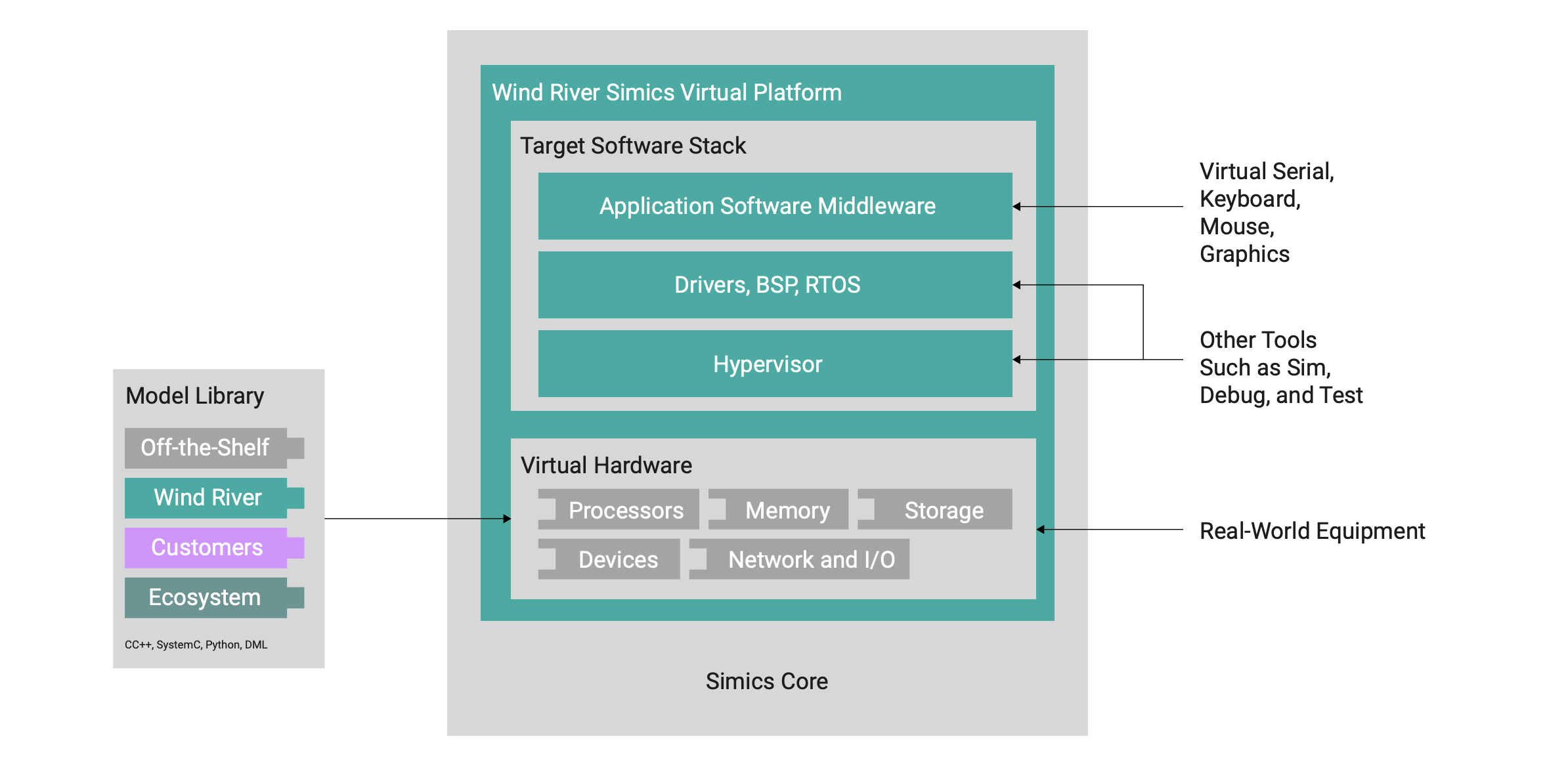Wind River Studio Digital Twin
Wind River® Studio cloud-native simulation platforms allow you to create simulated digital twins of highly complex real-world systems for automated testing and debugging of complex problems.
ARCHITECTURE

FEATURES AND BENEFITS
The key simulation capabilities within Studio include:
- Wind River Simics®: Developers use this full-system simulator to simulate the hardware of complex electronic systems. Simics allows on-demand and easy access to a fully simulated target system, supporting more efficient collaboration between developers and enabling large-scale test automation.
- QEMU: An open source machine emulator, QEMU mimics the machine’s processor through dynamic binary translation and provides a set of different hardware and device models. It can be used within the Studio environment for application development and as a testing platform from the Studio user interface, from Visual Studio, and from a command-line interface.
- Virtual Lab: A cloud-native reservation system hosting embedded hardware targets and large-scale simulation resources, Virtual Lab is based on Simics and QEMU. It ensures that dispersed development teams have high availability of embedded targets to debug and test.

